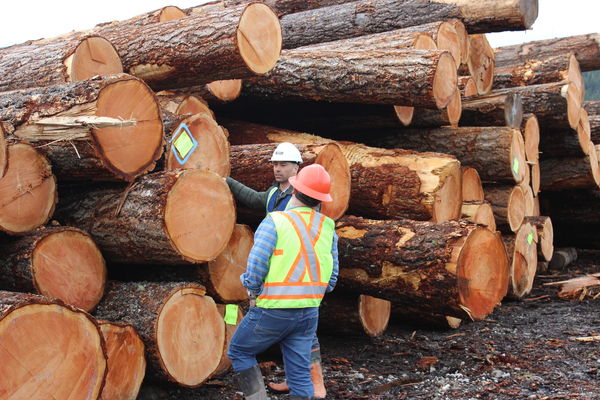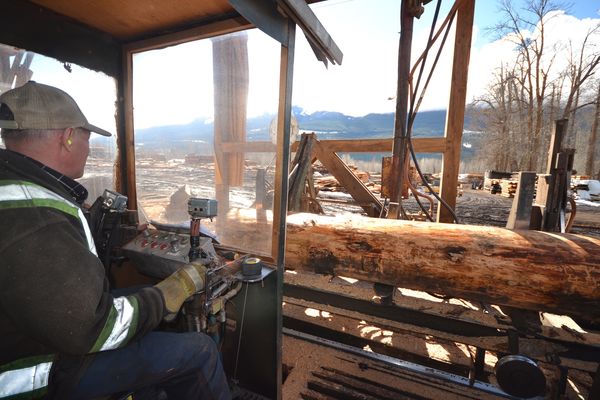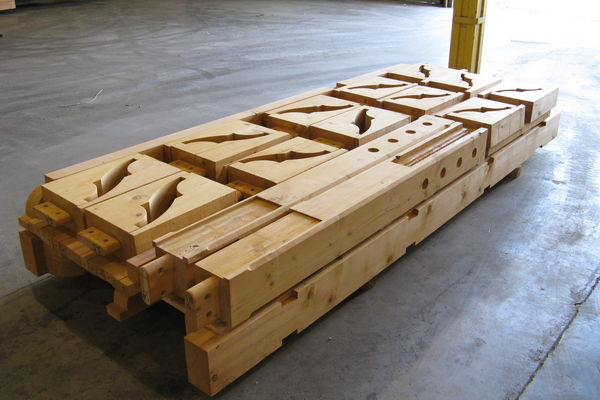Canadian Timberframes Operations
Our Operations
Canadian Timberframes Ltd has been in operation since 1999. With a long history in the timber industry, we have perfected our process. We have strengthened our supply chain through the process of vertical integration, paying close attention to sustainable development.
Log Selection
Our location in Golden, BC allows us to hand select the best interior Douglas Fir logs for our projects.
This ensures we have the largest stock & best quality logs at our mill. Once a log is ready to be used in a project, our skilled millwrights grade a log before bucking to maximize the amount of board footage that can be gleaned from that tree.
The video shares President Jeff Bowes explaining our process of hand selecting logs. We look for consistent timber fibre without pitch, knots, burls, spirals or ring shakes.
Log Sorting & Grading
Canadian Timberframes is part of the Timber Products Inspection, Inc. (TP) program, an independent, third party wood product inspection, testing, and consulting company with field representatives throughout North America. TP provide professional inspection services and monthly auditing. Our customers have independent, professional third party assurance of our timber grades stamped on our timber. Grading rules are based upon ‘Standard methods for establishing stress grade for structural members used in log and timber frame buildings’ Standard ASTM D3957 a North American recognized standard used for both residential and commercial uses.
“We are excited to pass this high level of quality to our customers and we are one of the few of North American timber frame companies with this level of timber accreditation.” Says Jeff Bowes
When the grade of timber is specified by an architect or engineer within their design, we can deliver on these requirements in-house without adding additional costs or time where other manufacturers would have to source this service; get tested & comply.
Grading provides a layer of protection for the manufacturer and homeowner by establishing definable levels of quality for the products being sold and marketed within the industry.
By providing this level of confidence and security to our customers it ensures 3 important measures: each piece has been visually inspected and graded – ensuring quality plus; it ensures all clients are delivered the quality of wood specified in their contract and lastly; with the ongoing monthly surprise inspections by TP the quality & grading is always being validated and endorsed.


Air Drying
A harvested tree is called a log. When a log is harvested, it is a 'green' log due to the moisture content from the "water" in the tree. A green log (aka. wet lumber) shrinks considerably and can check (crack) and warp as it dries, therefore it is not a good building material until it has reduced to a lower moisture level.
So how do we dry our logs? Our logs are dated when we receive them and are placed into log decks so air can circulate throughout the logs over at least a year's time until it reaches a low moisture content. Air drying often produces a higher quality, more workable wood than kiln drying.
Does Canadian Timberframes Kiln Dry? When special requests are made, we will kiln dry timber. Kiln drying typically adds about 10% to 15% to the cost of the frame due to the additional power/energy used, additional shipping to the kiln, and aggressive cooking of the timber. Kiln drying can cause timbers to twist and check more than they would naturally, which won’t affect the structural integrity of your home, but could render some wood unusable.
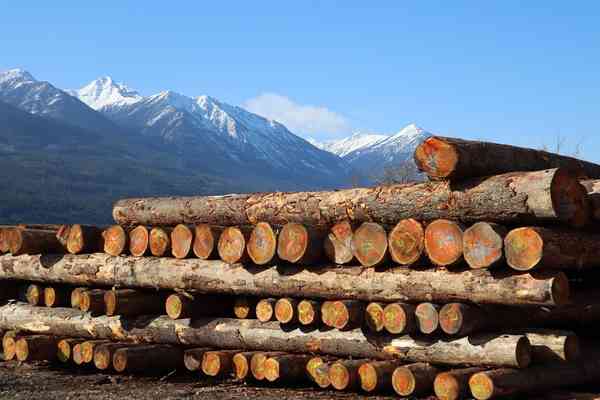
Log to Cant
After at least one year, a log is taken from a deck to our sawmill, and sawn into cants - this is where your project will start its journey. The lumber is sorted, graded, and stacked with spacers between each layer of lumber to start the next phase of the drying process. From there the stack of lumber is stored in our drying shed, to further dry and reduce moisture content.
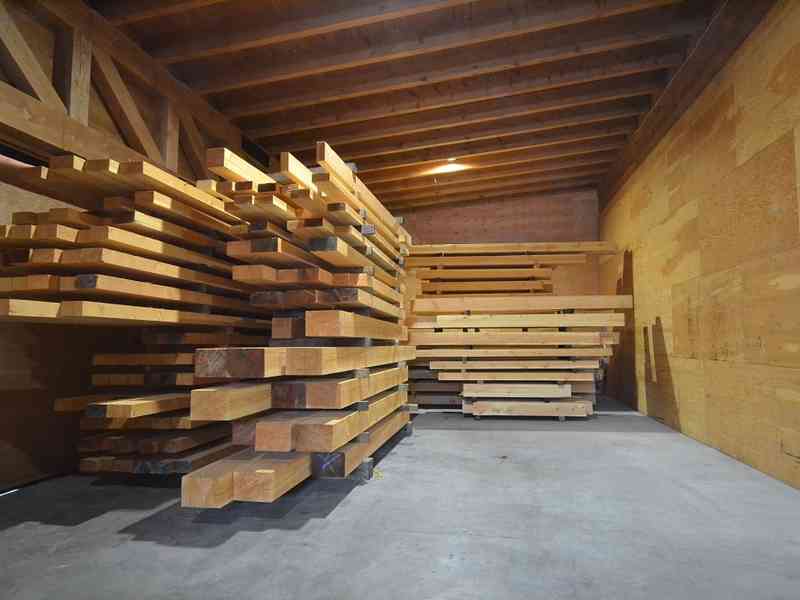
Design & Structural Engineering
Whether working with an architect or our skilled in-house design team; they will draw out the ideas and styles, size & layout that you would like to incorporate in the design of your new custom home. One of the biggest determining factors in choosing an architect or our in-house design team is typically budget. Either way we are happy to provide you with top-notch professional service every step of the way.
During the design phase, conceptual floor plans, exterior elevation drawings, and 3D timber frame models will be created. We quote designs based on the timber frame model and any additional Canadian Timberframes enclosure systems used.
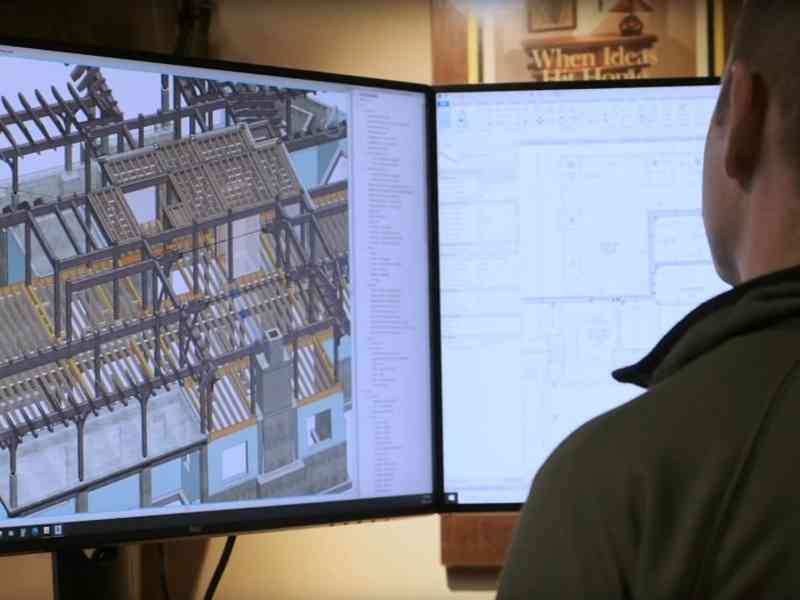
Production
Once we receive architectural and engineering sign-off, we can begin the production of your timber. We utilize CNC technology to produce the mortise and tenon joints that will connect your timber frame. It then moves to our planer which flattens and straightens the timber. Our carpenters and production team will perfect any hand cut joinery and send it to be stained. From there it is packaged and shipped to your job site.
Our goal is to provide our clients with a timber frame that can be assembled on site easily and efficiently without modification or specialized equipment. Our joinery is designed with raising and installation in mind: each of the timber frame parts are numbered and we provide all assembly documents to the builder. We strive to meet the requirements of an efficient assembly process.

Do you want to know more?
Keep Up To Date
Are you wondering what our company is up to? Sign up for our newsletter.

